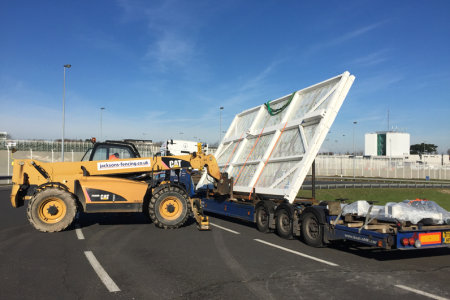When gates and barriers malfunction – whether by design, installation or inadequate maintenance – the results can be catastrophic, and can led to injury, loss of limb or even fatalities. There is a wide variety of gates and barriers available, add to this the myriad of regulations and specifying safe access control becomes a complex process. Little wonder so much confusion exists around gates and their suitability. But it is critical to do correctly.
Jacksons Fencing recommends the application of current best practice for architects, engineers and chartered surveyors when specifying gates and barriers to meet current criteria for gate safety.
Risk Assessment
A risk assessment of your proposed site is the first step in the process of specifying the design and type of gates required to safeguard your premises. This should be as comprehensive as possible, considering both the immediate and long-term use of the site.
Consulting drawings and plans form part of the process to review what access control is needed. Beyond this, it is equally important to visit the site to understand how operations and safety considerations will affect the proposed area for the gate or barrier. This is the only way to thoroughly understand how it will fit in and allows you to consider aspects not necessarily included on a paper specification, such as uneven ground, space restrictions, wind loading and more.
Understanding access control regulations and legislation
Current regulations and legislation must be consulted, which vary depending on whether you choose to use manual or automated access operation.
Manual swing gates and barriers are designed to operate freely but can still be large and heavy. They are the most common type for both pedestrian and vehicle access, perhaps due to the fact they’re proven, simple and cost effective. However, when left unchecked and without mechanical devices to hold them in both open and closed positions, they can be dangerous. It is worth checking all options and conducting a thorough risk assessment prior to specifying a manual gate or barrier to ensure both safety and security requirements are met.
The benefits from an automated gate may outweigh the lower initial cost of a manually operated system. Automated gates typically employ electric motors or hydraulic rams and provide convenience and security. Butthey also require routine maintenance and must comply with legislation.
When specifying a manual gate, consult BS 5709:2006 (which covers gaps, gates and stiles) and BS EN12604:2000 (which covers doors, gates and barriers). With automated gates and barriers, ensure compliance with EU Machinery Directive 2006/42/EC which is implemented by the UK‘s Supply of Machinery Regulations 2011. As automated gates and barriers are classed as machinery they must also be CE marked. These regulations additionally require correct installation and regular maintenance.
Best practice
Jacksons Fencing has compiled all the necessary information for a best practice approach to access control and has created the handy Guidance on Specifying Manual and Automated Gates and Barriers. The free downloadable document gives specifiers the information needed to specify safety and security access control products with confidence, saving time that would otherwise be spent sifting through numerous other sources.
We also advise looking out for the ‘Gate Safe Aware’ logo on products and services as this indicates that engineers and technical advisors have passed an in depth training course to ensure they are up to date with the very latest standards and guidance for the installation and maintenance of automated gates.
For more information visit www.jacksons-fencing.co.uk or email security@jacksons-fencing.co.uk











